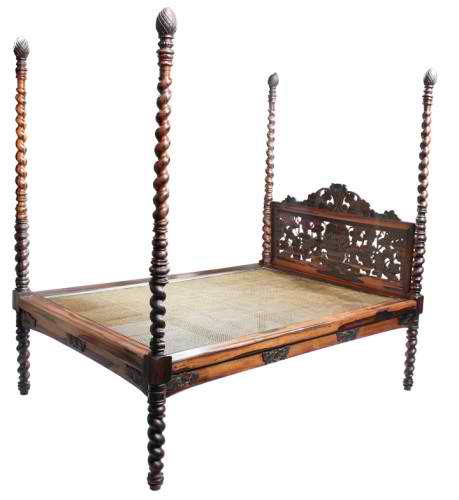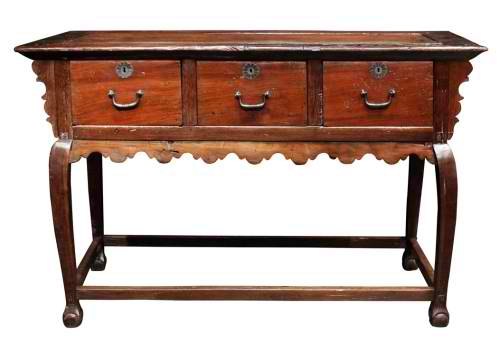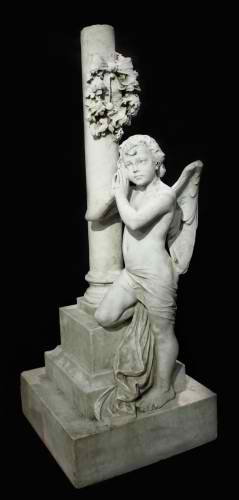
León Gallery will be auctioning off very rare furniture pieces and religious icons for its upcoming Kingly Treasures December auction.
Formal bidding will be held on Dec. 3, 2 p.m., at Eurovilla 1, Rufino and Legazpi Sts., Legazpi Village, Makati City.
One of the most important pieces is the Gabaldon kamagong bed, which, according to social historian Martin Tinio, is a rare example of a rich man’s bed from the 19th century. It has a starting bid of P500,000.
The piece belonged to one of the progenitors of the Tinio Family, the richest and most landed family in Nueva Ecija.
“This kamagong bed is most unusual, its elaborate headboard is carved from an exceedingly thin plank that is completely black,” Tinio said. “The bed stands on four turned barley-twist posts that end in blunt arrow feet. The caned mattress support is framed by planks ornamented on its upper and lower edges with a quarter-round molding. The front and side aprons attached to the bottom of the frame are appliqued at the ends with a spray of three grape leaves and a bunch of fruits.”
Another important piece is the 18th-century altar table with three drawers, which is made of balayong, molave and brass. Starting price is P500,000.

“This mesa altar or altar table was made in the hinterlands of the Ilocos, as evidenced by the primitiveness of its execution,” Tinio noted. “The piece has a balayong carcass and stands on four cabriole-type legs ending in stylized ball and claw feet that are joined to each other by a box stretcher composed of narrow planks. To the underside of the drawer supports in front and at the sides are attached scalloped molave aprons jigsaw-outlined with a lambrequin design of ogee curves and cusps.”
Meanwhile, Isabelo Tampinco’s marble statue, signed and dated 1918, has a starting bid of P500,000.

“This marble statue is one of the few pieces in marble executed by Isabelo Tampinco,” Tinio said. “It was originally meant to decorate the tomb of a rich person and is an allegorical piece. The composition consists of a broken column to which a floral wreath is attached by means of a wide ribbon. The former is a Masonic symbol and was usually used as a monument to a person whose life was cut short, while the wreath is a tribute to his memory.”
Also part of the sale is the 18th-century image of St. Joseph made of ivory and baticuling wood. It has a starting bid of P300,000.
“This image of St. Joseph has ivory face, hands and feet attached to a carved body of baticulin wood, a soft wood that became the favorite material for carving wooden statues beginning in the 19th century,” Tinio said. “Prior to that, baticulin was extensively used for the carved and polychromed bodies of small santos with ivory heads and hands, as well as the mannequins that were clothed in gold-embroidered vestments. By the 20th century, all santos were carved from this wood.”
Meanwhile, Galo Ocampo’s beautiful oil-on-canvas “Stations of the Cross Crucifix,” a 1982 work, will have a starting bid of P120,000.
The painting is shaped after the crucifix at Basilica di Santa Croce in Florence by the early Renaissance artist Cimabue. —CONTRIBUTED
View e-catalogue: www.leon-gallery.com/ecatalog. E-mail info@leon-gallery.com or leongallerymakati@gmail.com.
Call 8562781.

